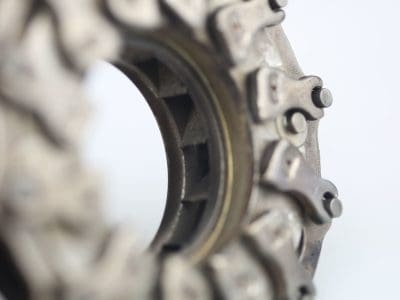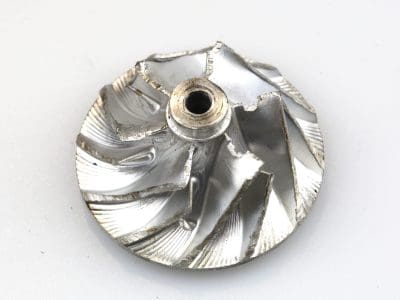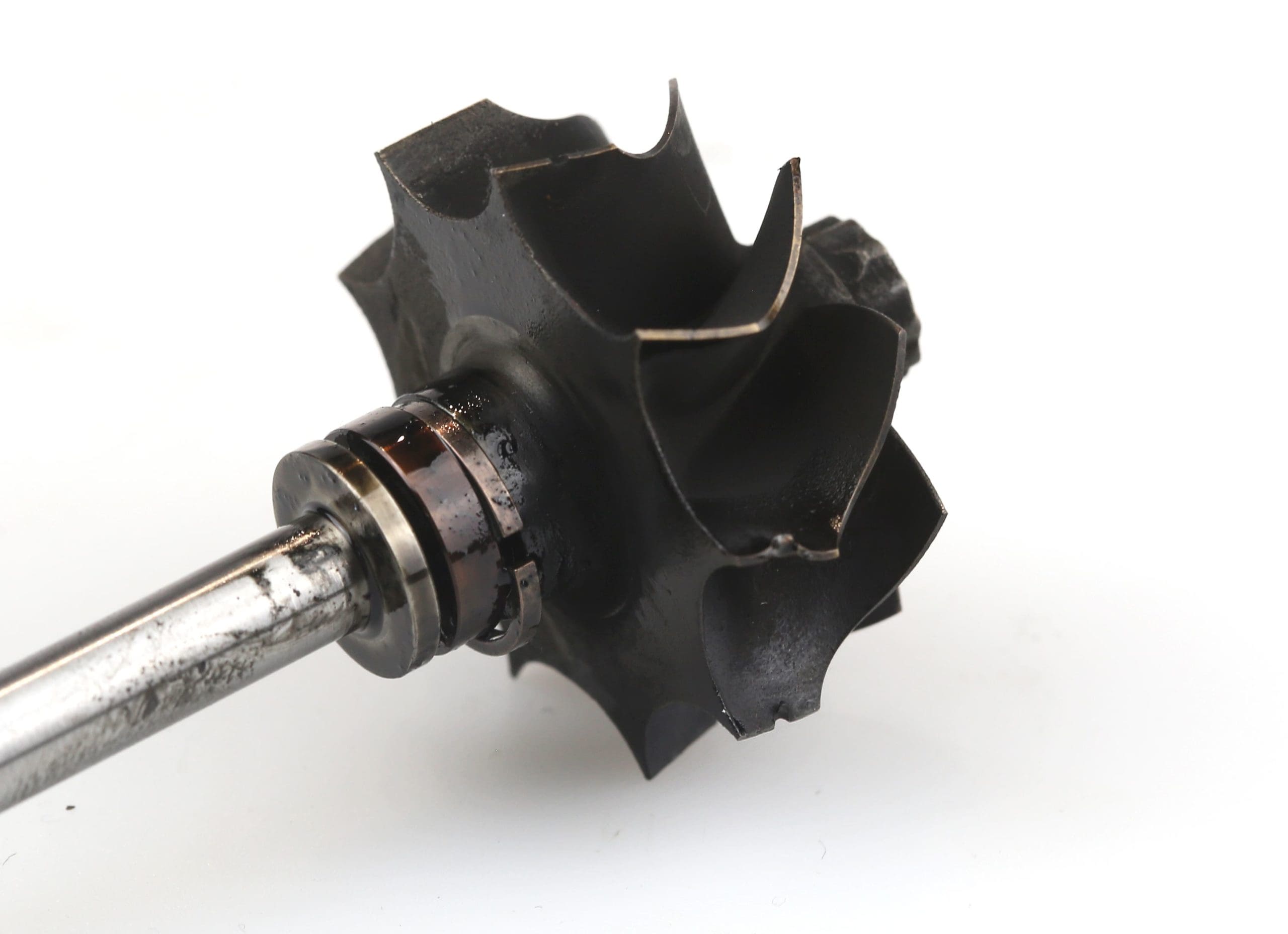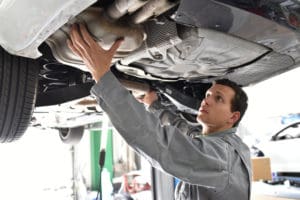What is foreign object impact?
Today’s modern turbos spin at speeds of over 300,000 revs per minute – fast enough to whip the air through the intake at near-Mach 1 – and endure temperatures close to 1,000°C. In these conditions, even the smallest of particles sucked into the turbine, compressor or bearing housing, can result in immediate turbo failure. Worse still, these same fragments can be carried into the combustion chamber, causing irreversible damage to the engine too.
What causes foreign object impact?
Foreign object damage can be caused by:
- objects entering the turbo air intake due to a faulty, low quality or poorly maintained air filter
- worn or faulty turbocharger pipes, hoses and/or connections allowing debris to bypass the filter into the turbo
- fragments of gasket material breaking off and entering the unit
- left over debris from a previous turbocharger failure
- nuts, bolts, washers etc that become loose or are left in the intake pipe due to poor service practices
- debris from damaged engine components can enter the exhaust gas intake and impact the turbine wheel, shaft or VVT
- exhaust gases containing oil particles, sludge and other coked debris can damage turbine wheel blades
- condensation in the intake section causing ice to form in low temperatures which can damage compressor wheel blades
What are the signs of foreign object impact?
Failure due to foreign object impact is one of the easiest turbo issues to diagnose, given the obvious signs, such as:
- loss of power
- check engine light illuminated
- on the air intake side of the turbo signs include:
- chipping, pitting and broken blade – visible on the compressor wheel blade tops
- pitting on or around the compressor air inlet
- excessive movement between the wheel profiles and housing bores – there should be a uniform gap
- damage to nozzle ring blades


at the turbine side, the turbo may need to be dismantled to gain access to the turbine wheel, shaft and VNT – signs are:
- damage to one or more of the VNT vanes
- harsh metallic noises coming from the engine bay as the turbo spools up
- chipping/damage to the blades on the turbine wheel
- bent shaft

How to prevent foreign object impact?
Fortunately, by following some simple, best-practice advice, the risk of foreign object damage can be minimised. This includes:
- check that the entire air induction system is clean and object free
- inspect pipework for signs of wear and tear – replace as necessary
- always fit OE-quality filters, as specified by the vehicle manufacturer
- only ever use new, OE-quality gaskets, seals and fitting kits
- ensure there is no residual debris from the previous turbo failure
- never use liquid sealant – it is liable to harden and break-up when exposed to heat

How to resolve foreign object impact?
However, if foreign object impact is identified, it’s important to remove and clean components on both the high- and low-pressure sides of the turbo, as follows:
- thoroughly clean the entire air supply system including the pipework, intercooler and EGR to ensure it is completely free of any particles – any concerns replace the whole system.
- flush and change the engine oil
- fit a new OE-quality oil filter, as per the vehicle manufacturer’s specification
- inspect the oil supply, return pipes, in-line filters and fittings for evidence of foreign objects and replace as needed – this may require removal and cleaning of the sump and oil pump
Whilst this may add additional expense to your customer’s bill, it is far more cost and time-effective than having to fit another turbo, and potentially an engine, when they return with the same issue soon after. So, remember to always diagnose and fix what caused the original unit to fail, before fitting a new turbo.



